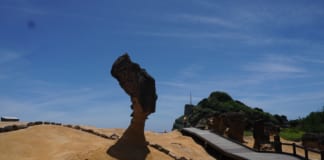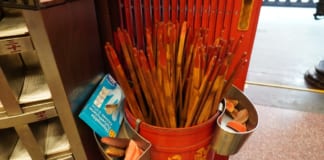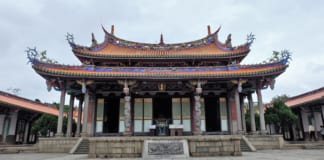
You can check One-day Travel plan in Beitou here.
Telling about Beitou, most people immediately think of the famous hot springs near Yangmingshan National Park. However, Beitou has more than that. Beitou has the most mountains and the highest mountain in Taipei. Beitou has both plain and grassland with rivers through the valley. Beitou is far from the bustling city center and convenient enough with the MRT (Metropolitan Rapid Transit in Taipei) system. Beitou has modern features of the social development but still very well preserves old relics and Japanese-era architecture. All things create an area worth a top visit when coming to Taipei.
We arrived in Beitou on a late May afternoon. It is not the ideal time for a relaxing hot spring bath because of the hot weather. But for me, that hot spring helps relieve shoulder and neck pain when using the computer daily to race with projects.
Stepping out of the current MRT station, right next to it, is Xinbeitou Historic Station, the only remaining 100 years old station in Taipei. It is a Taiwanese red cypress wood building with beautiful architecture in the Japanese colonial style. A tiled roof and four circular windows are above. The interior exhibits the station’s history, while the ticket counter serves as the local tourist information office.

Passing the station, we stopped at the Japanese restaurant opposite, across the street. This restaurant is famous for bento, and its price is a bit high but commensurate with the quality and portion of the dish. You can easily see the old station from the high floor in the golden bright noonday sun.
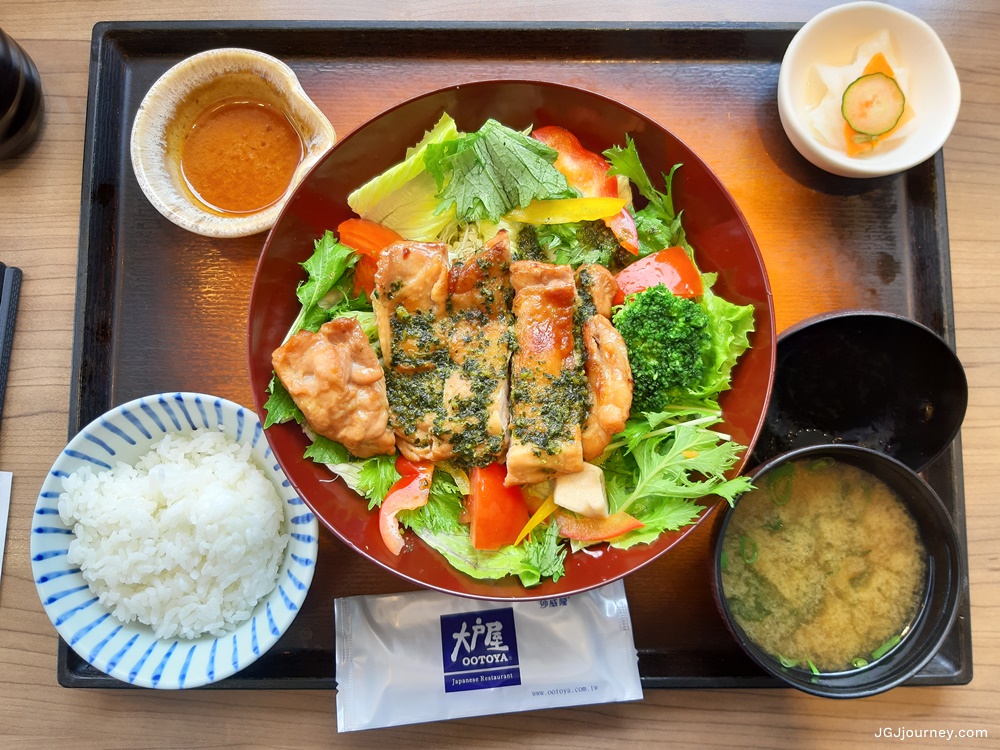
From the restaurant, following the footpath with a wooden corridor, you will see the Ketagalan Cultural Center on the left, which organizes many cultural activities and exhibitions of indigenous crafts. Across Beitou Park, the Hot Spring Museum is on the right.
This place was originally a Japanese colonial public bathhouse, considered the largest bathhouse in East Asia at that time. After World War II, it was closed and abandoned due to the intermittent change of the competent authority. In 1994, a group of teachers and students from Beitou Elementary School discovered it during a local culture course field trip and recommended conservation. In 1997, the Beitou Public Bathhouse was registered as a historic site. Later, it was restored and became the Hot Spring Museum, officially re-opened to the public on October 31, 1998. The building is designed with two floors; the ground floor is built of brick, and the second floor is wooden, combining Japanese and Western architecture. The first floor has an extensive public bath area, a footbath area, and a series of low faucets. The first floor also presents visual information about Beitou Hot Springs, minerals, and Hokutolite (created when green sulfur hot spring water from the Hell Valley passes over lands of the Beitou Creek). It takes about 120 years for a single centimeter of Hokutolite to crystalize. The second floor provides space for resting, enjoying tea, playing chess, and looking at the landscape.

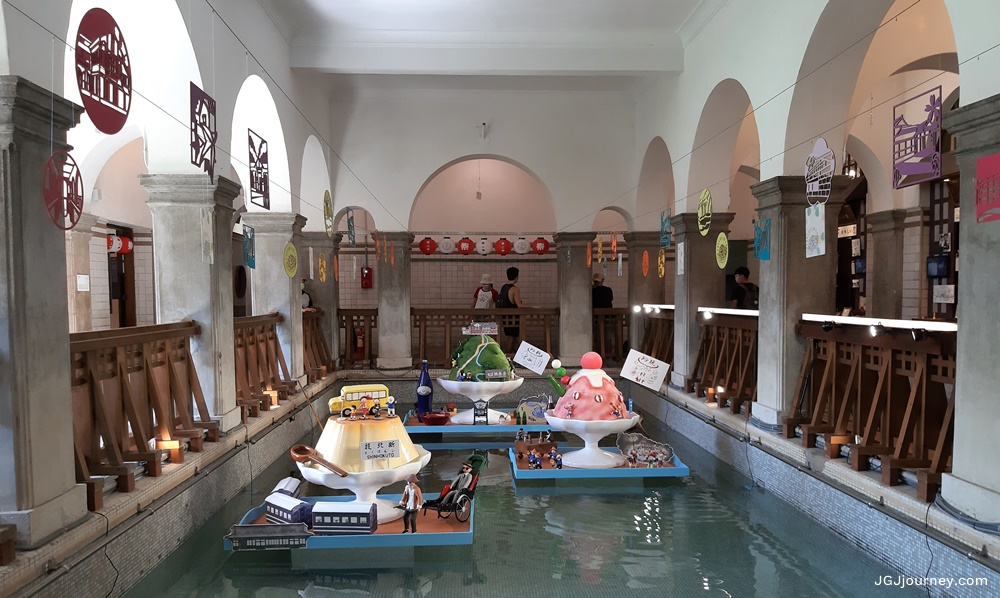
Out of the museum, you can easily see the nearby Taipei Public Library Beitou Branch. It was the first green library in Taiwan and was opened in November 2006. The library has a two-storey wooden architecture, interwoven with many large windows to catch the sun.

A few more steps, it’s Beitou Open-Air Hot Spring Park (北投 公園 露天 溫泉), which is large, popular, and cheapest. With the easy card integrated student card, I only needed to swipe the card to enter and was charged only 30 NT. This public bath does not discriminate against sex but requires a bathing suit. It is divided into three hot pools and one cold pool. Hot pools range from warm to very hot. For a cold pool, you need a swim cap to use. Before stepping into the pool, you have to wash your feet clean. There are a series of rooms in the corner to change clothes or take a bath. Many local people come here and are pretty polite. If you know Chinese, you can chat with them. You are not limited to soaking in the pool, but you should note the opening and closing times and the break time to clean pools. Moreover, you can book hotels around if you prefer privacy and more advanced services such as a private pool, tea parties, and snacks.

At this point, if you want to visit other cultural and natural attractions of Beitou, you should see the Beitou Plum Garden and ask for a map of the Beitou Ecomuseum to choose your next destinations. That’s a pity; we visited the Beitou Plum Garden as the final point, so we missed the Sulfur Springs Valley, located not far from the Beitou museum.
The worth destinations are as follows:
Beitou Plum Garden was built in the late 1930s. The building retains the original wooden frame architecture of the Japanese colonial era. At the entrance, there is an inscription “Plum Garden” in Chinese by the calligrapher Yo Youren who used to live here. Currently, the building displays art works and provides visitors with sightseeing information.

Geothermal Valley is a jade-like spring with a history of more than 200 years and is covered with fog. Because the temperature of this stream is very high, from 80-100 degrees Celsius, it is not suitable for direct contact with the body. This area is designed with a winding fence to preserve the stream and protect the safety of visitors.
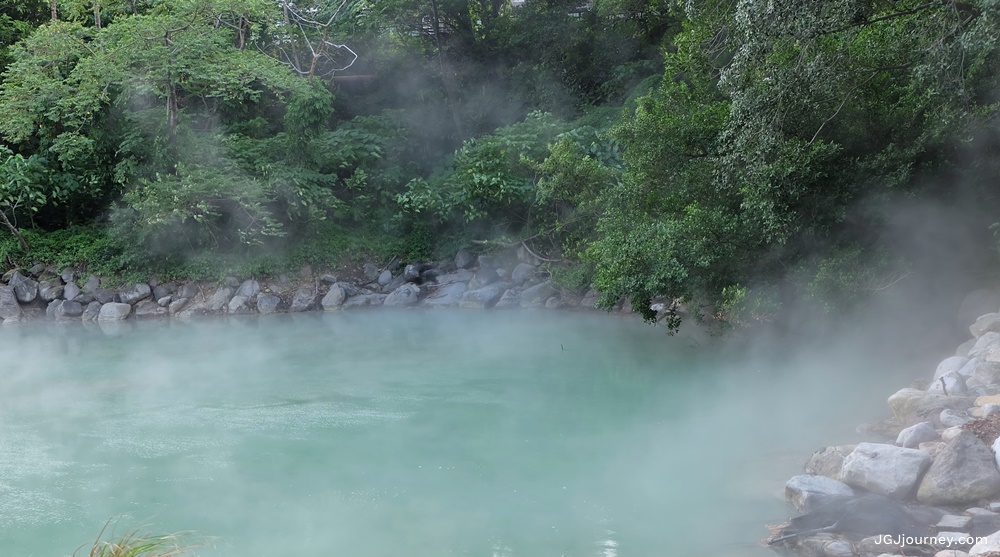
Puji Temple is one of Taiwan’s few remaining Japanese colonial period Buddhist temples, and it retains its Japanese-style architecture and worship rituals. The temple was built on a quiet hill in 1905 with the contributions of railway workers and engineers. Puji Temple belongs to the Shingon school, one of the oldest schools of Buddhism in Japan, founded by Kobo-Daishi. (Currently, Kobo-Daishi is worshiped at Taipei Mazu Temple.) Today, the temple worships Guanyin, known as the “Guardian God of Hot Springs.”

The Beitou Museum was originally the most upscale hot spring hotel in Beitou during the Japanese colonial period- Hotel Kazan. Built in 1921 on a mountainside, it is the only two-story Japanese-style building entirely of wood. The Beitou Museum was designated a historic site by the Government in 1998 and is managed and operated by the Fu Lu Cultural Foundation.

The Marshal Zen Garden is part of a hotel complex during the Japanese colonial period that served as an entertainment club for the Japanese military. After 1949, this building became the house of Marshal Chang Hsueh-Liang (or Zhang Xueliang) under the control of the Government. Zen Garden is located in a prime location, away from the hustle of the central area, and peaceful enough in beautiful nature. Situated above the Geothermal Valley, you can see rising steam standing at the Zen Garden. Besides, you will also look at Yangmingshan Range, the Guandu Plain, and the Tamsui River. However, a fee is available for this place, which you must consider when visiting.
Sulfur Springs Valley is the source of hot water for hot spring bath sites in Beitou. The valley is located on the way to Yangmingshan with the geysers from the fumaroles.
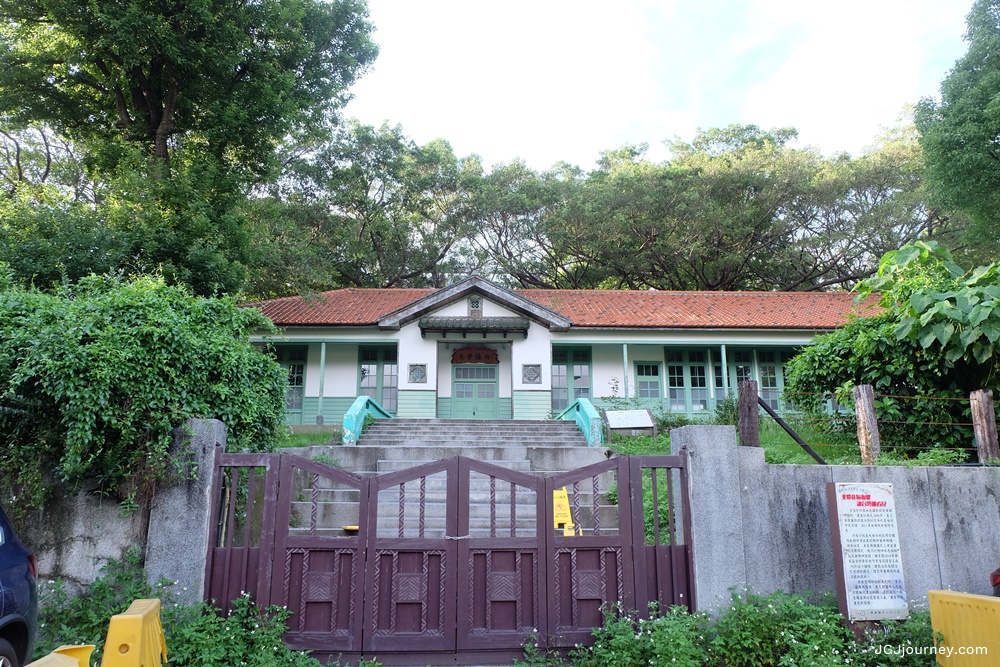
Tri-Service General Hospital Beitou Branch and Beitou Heart Village are on the same street; both were built during the Japanese colonial period. Because of the healing power of hot springs, the Japanese built a sanatorium and a military village here.
Besides hot spring activities, and cultural sites, local events are also held seasonally:
- Beitou LOHAS Festival takes place every year in March and April to promote culture and scenery such as Qixing Mountain and hot spring.
- Beitou Cooling Summer Festival takes place from July to the end of August with summer refreshments like watermelon and recreates a land rich in history and culture from the past to the present.
- Taiwan Yueqin and Folk Song Festival is a traditional music event every September and October.
- Taipei Hot Spring Festival, from October to November, focuses on the hot spring culture of Taiwan and Japan. Visitors can also experience Japanese Shinto culture.

